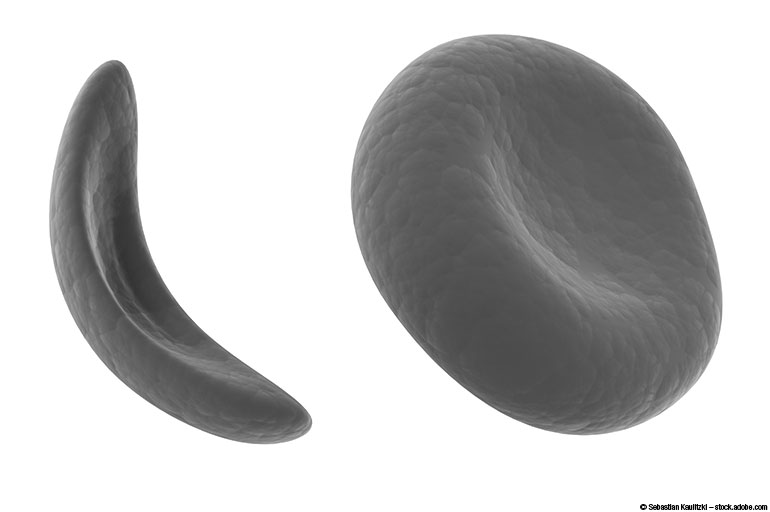Welcome to Facts Vibes! Today, we’re delving into intriguing facts about sickle cell anemia. From its genetic origins to the impact on affected individuals, join us as we explore the unique aspects of this condition. Get ready to broaden your understanding of this important health topic.
Understanding Sickle Cell Anemia: Unveiling Fascinating Facts
Understanding Sickle Cell Anemia: Unveiling Fascinating Facts
Sickle cell anemia is a genetic blood disorder that affects the hemoglobin molecule in the red blood cells. The most common and well-known symptom of this condition is painful vaso-occlusive crises. These episodes can cause severe pain and often require hospitalization.
It’s important to note that sickle cell anemia is prevalent in certain populations, particularly individuals of African, Mediterranean, Middle Eastern, and Indian heritage. The inheritance pattern of sickle cell anemia follows an autosomal recessive genetic trait.
While sickle cell anemia poses numerous health challenges, it’s also intriguing to learn about the evolutionary significance of the sickle cell trait. Research suggests that carrying one copy of the sickle cell gene might provide a survival advantage against malaria, which could explain the persistence of the trait in certain populations.
Moreover, ongoing research is shedding light on potential treatments and therapies for sickle cell anemia, offering hope for improved management of the condition. Understanding the mechanisms underlying this complex disorder is crucial for developing targeted interventions and enhancing the quality of life for individuals living with sickle cell anemia.
Most popular facts
Sickle cell anemia is a genetic disorder that affects the structure of hemoglobin in red blood cells.
Sickle cell anemia is a genetic disorder that affects the structure of hemoglobin in red blood cells.
The condition is most commonly found in people of African, Middle Eastern, and Mediterranean descent.
The condition is most commonly found in people of African, Middle Eastern, and Mediterranean descent.
Sickle cell anemia can cause episodes of extreme pain, known as sickle cell crises.
Sickle cell anemia can cause episodes of extreme pain, known as sickle cell crises.
Individuals with sickle cell anemia are at an increased risk of infection due to their compromised immune system.
Individuals with sickle cell anemia are at an increased risk of infection due to their compromised immune system.
The condition can lead to organ damage, including damage to the spleen, kidneys, and lungs.
The condition can lead to organ damage, including damage to the spleen, kidneys, and lungs.
Sickle cell anemia can also result in stroke, as the abnormal red blood cells can block blood flow to the brain.
Sickle cell anemia can also result in stroke, as the abnormal red blood cells can block blood flow to the brain.
Patients with sickle cell anemia often require blood transfusions to manage their condition.
Patients with sickle cell anemia often require blood transfusions to manage their condition.
The disorder can cause delayed growth and puberty in children affected by it.
The disorder can cause delayed growth and puberty in children affected by it.
Pregnant women with sickle cell anemia are at a higher risk of complications during pregnancy and delivery.
Pregnant women with sickle cell anemia are at a higher risk of complications during pregnancy and delivery.
Sickle cell anemia can result in vision problems, as the abnormal blood cells can block blood vessels in the eyes.
Sickle cell anemia can result in vision problems, as the abnormal blood cells can block blood vessels in the eyes.
Hydroxyurea is a medication commonly used to treat sickle cell anemia by increasing the production of fetal hemoglobin.
Hydroxyurea is a medication commonly used to treat sickle cell anemia by increasing the production of fetal hemoglobin.
Bone marrow transplants can potentially cure sickle cell anemia, but they come with significant risks and are not widely available.
Bone marrow transplants can potentially cure sickle cell anemia, but they come with significant risks and are not widely available.
People with sickle cell anemia are more susceptible to heatstroke and dehydration due to their reduced ability to concentrate urine.
People with sickle cell anemia are more susceptible to heatstroke and dehydration due to their reduced ability to concentrate urine.
The condition can lead to ulcers on the legs, as poor circulation can cause skin breakdown and slow wound healing.
Poor circulation can lead to ulcers on the legs, as it can cause skin breakdown and slow wound healing.
Sickle cell anemia is a lifelong condition, but advances in treatment and care have improved the life expectancy and quality of life for those affected.
Sickle cell anemia is a lifelong condition, but advances in treatment and care have improved the life expectancy and quality of life for those affected.
In conclusion, sickle cell anemia is a fascinating and complex condition that has a significant impact on individuals and their families. By understanding the interesting facts about this disease, we can work towards better management, support, and treatment for those affected. It is vital to raise awareness and promote research efforts to improve the lives of individuals living with sickle cell anemia.
